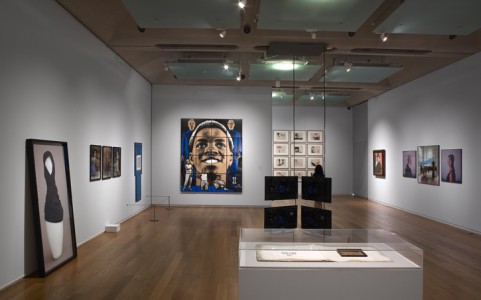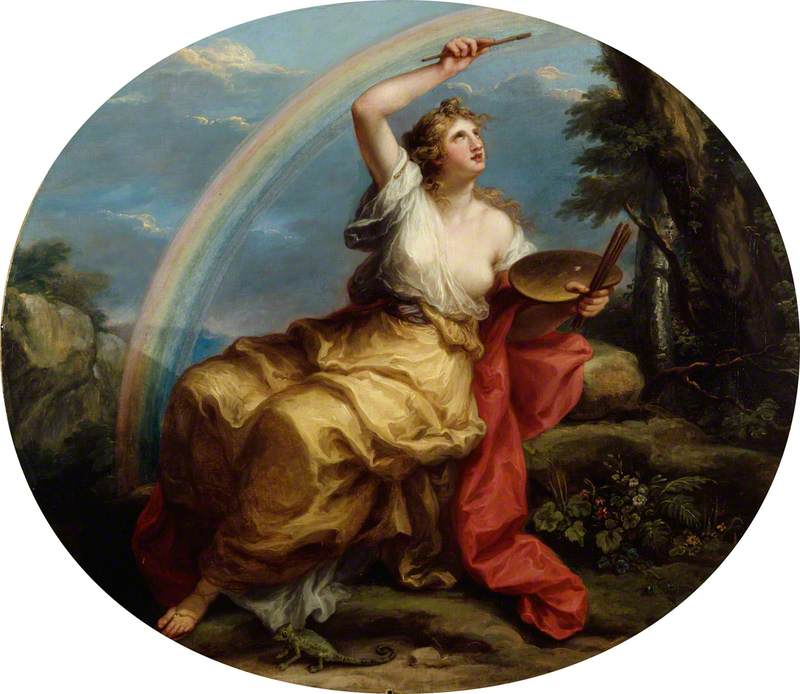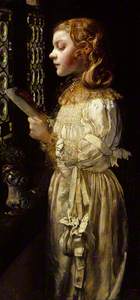To celebrate the exhibition 'Annie Swynnerton: Painting Light and Hope', staff and volunteers from Manchester Art Gallery on their favourite works from this remarkable show.
Italian Mother and Child
'This painting has taken me on a journey over the years, from tracing her related series of paintings of contemporary Italian women to identifying the depicted basilica as Saint Lawrence Outside the Walls, Rome. For me, the tenderness of touch and gaze between mother and child are typical of Swynnerton’s ability to sensitively visualise the lives and plights of ordinary women. Equally, the earthy colours and thick white paint communicate the intense joy in painting figures bathed in light outdoors that Swynnerton discovered in Italy. The viewpoint still exists, making Swynnerton’s presence in the Italian landscape vividly tangible.'
Katie J. T. Herrington, Curator, The Stanley & Audrey Burton Gallery, Leeds and co-curator of the exhibition
The Letter
'What appeals to me about this painting is the eerie combination of light and darkness within a confined space that brings an almost spectral quality to this little mystery. Entering into a startlingly personal and intimate setting, we long to know just why the letter is eliciting such rapt attention. It reminds me of a similarly titled Vermeer painting but Swynnerton’s young woman is more prominent. The girl seems possessed of a discerning and quietly confident nature. Might she therefore yet live to overcome the restrictions of her own time and to fulfil her destiny in a later and more enlightened age?'
John Ward, Volunteer Guide, Manchester Art Gallery
Oceanid
'Oceanid is a beautifully sensuous image full of light, heat and joy. The tapestry of vibrant colours and the varied textures of the paint are luxurious and expressive as though the artist relished making every brushstroke. I love the way this draws you into the experience of the young woman basking in the sun and enjoying the sensation of cool water on her skin. For me, it brings together what was important to Swynnerton – the life-enriching experience of the Italian landscape and the challenge of painting real women's bodies. I love too that it was bought by another woman artist, Christiana Herringham, who then had the foresight to sell it to a public collection at a time when few institutions were buying work by women.'
Rebecca Milner, Curator: Fine Art, Manchester Art Gallery and co-curator of the exhibition
Dame Millicent Fawcett, CBE, LLD
'Honouring women with honest and realistic portrayals is a key thread throughout Swynnerton’s work and one of my favourite examples is a portrait of women's suffrage champion Dame Millicent Fawcett, CBE, LLD, who helped win women the partial right to vote in 1918. It was likely painted to commemorate an honorary Doctorate in Law from St Andrews University, symbolised here through her robes. The dark domestic interior grounds the painting in reality, while Swynnerton’s signature thick paint is used to sculpt the contours and wrinkles of her face, bringing out Fawcett’s wry smile and warmth. The realism is extraordinary and I feel the painting has more in common with modern art trends to come than the work of her Victorian contemporaries.'
Adam Papprill, Visitor Services Assistant, Manchester Art Gallery
Montagna Mia
'Montagna Mia – 'My Mountain' – was painted in 1923, the year after she was made an Associate of the Royal Academy. Its symbolism is ambiguous, which is probably why I am drawn to it. In this painting I see a culmination of her work as an artist, but also of what was important to her: the Italian countryside that gave her so much joy throughout her life. She seems to have had an almost spiritual connection with it, and expresses this in the figure of the woman emerging from and melting into the landscape. The hazy, dreamlike rendering perfectly suits the enigmatic subject matter. I like thinking of Swynnerton in her late 70s, still creating, still engaging and still expressing her own idiosyncratic vision.'
Lindsay Porter, Volunteer Guide, Manchester Art Gallery
The free exhibition 'Annie Swynnerton: Painting Light and Hope' is on display at Manchester Art Gallery until 6 January 2019.
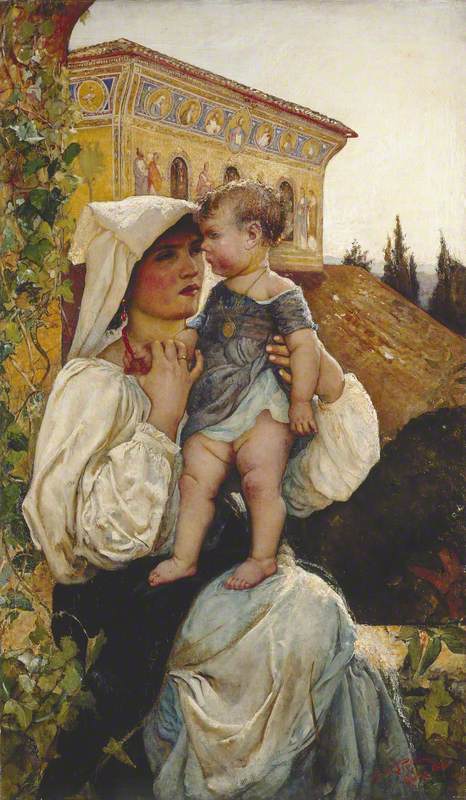

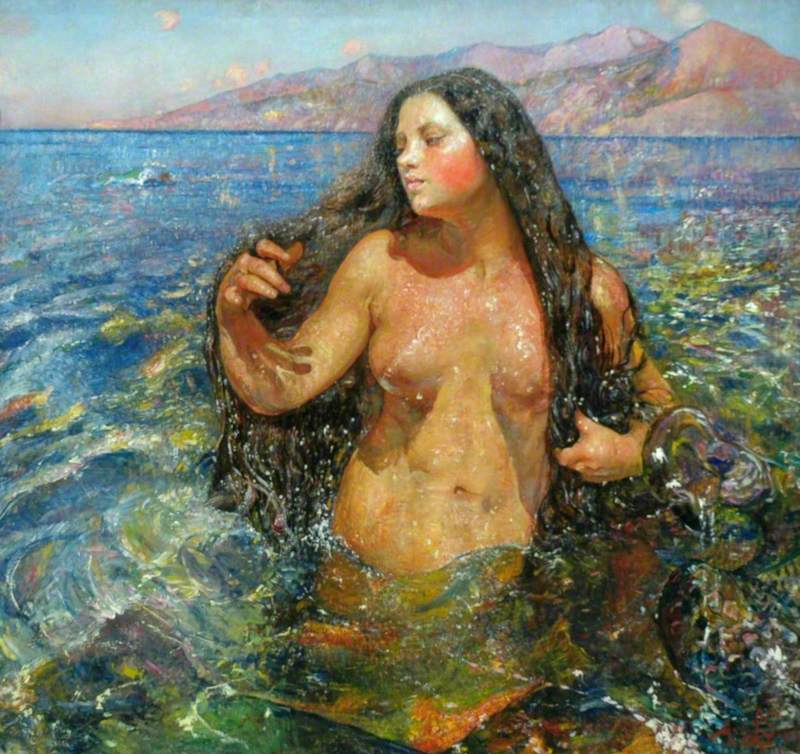

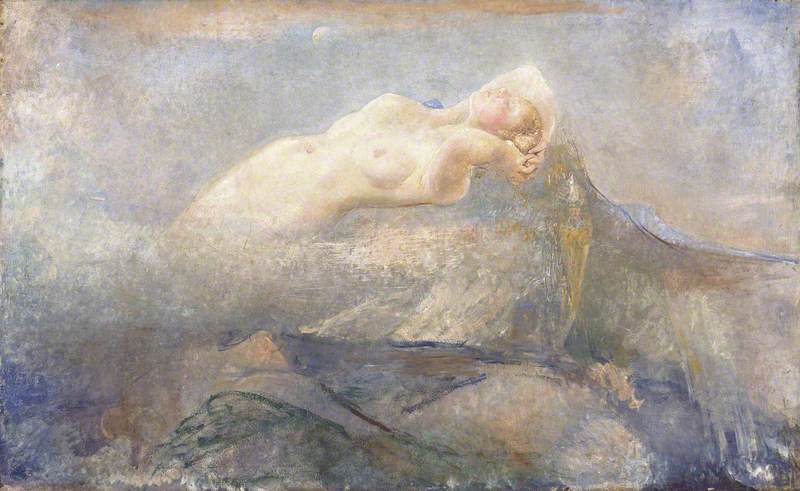


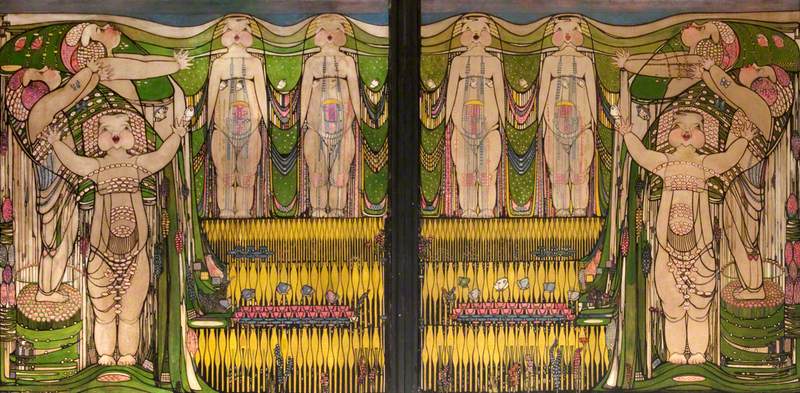

.jpg)
